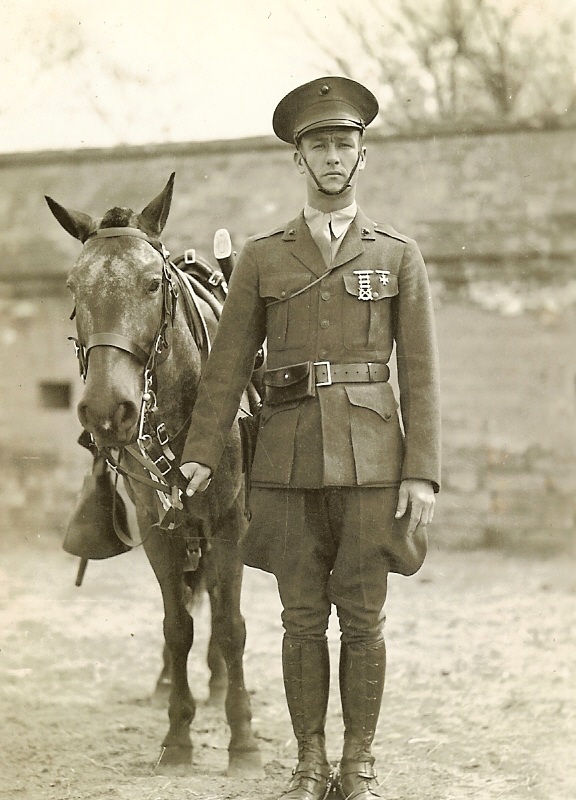
Whether they were called the Mounted, Horse Marines, Hoss Marines or Riders of the Peking Dust, the Legation Guard’s Mounted Detachment represents one of the more unique institutions established by the China Marines. It should be noted the only officially recognized Marine mounted detachment in China was at Peking. When the Marines assumed Legation Guard duty in 1905 the 9th US Infantry turned over to them 31 halters and other pieces of assorted tack. Furthermore, the Marines gained possession of a Quartermaster compound compete with a corral and stables. Since Marine officers of the time were expected to ride, it comes as no surprise that we see in the Woods collection a picture of Capt Harry Lee, the initial Marine Legation Guard Commander mounted on a horse. In those early years the Legation Marines also used horses as draft animals to pull caissons for their 3” Naval guns, a supply wagon and an ambulance they inherited from the Army. Prior to 1911 the Guard Detachment was too small to develop a mounted branch in imitation of their fellow British and Japanese Legation Guard counterparts. However, the arrival of additional Marine companies in October and December gave the Marines greater flexibility to explore new employment options. I believe sometime in early 1912 the Marines finally gathered enough horses to create a mounted detachment of about fifteen men. While their mounts could have exclusively been the small Mongolian ponies Jodan refers to in his book, more likely the first Mounted was equipped with a mix of western horses and Mongolian ponies. These early Horse Marines were armed with just rifles slung across their backs. The first group of mounted Marines was lead by and NCO until late spring of 1912 when Lt David Randall assumed command.
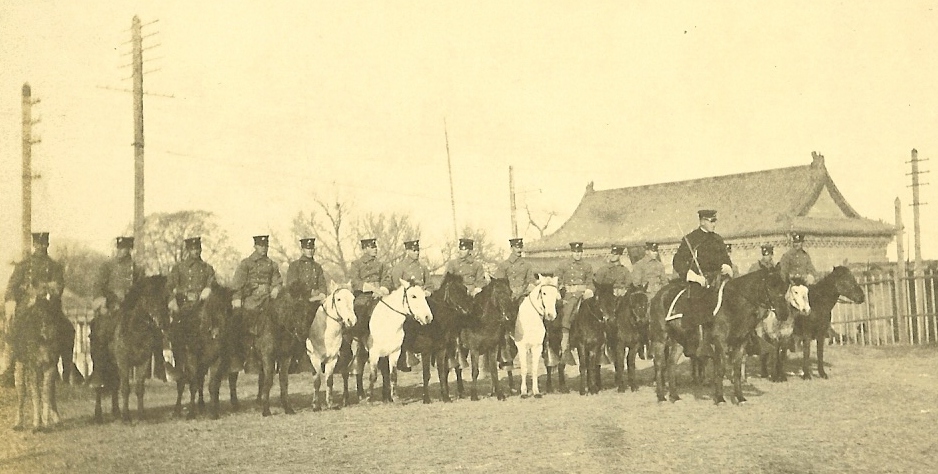
Lt Randall and the first men of the Mounted Detachment
The Mounted’s initial operational sortie occurred during the February 1912 riots when Capt Thomas Holcomb took several mounted Marines across the city of Peking to successfully rescue a family of Americans trapped near the Chinese Bureau of Engraving. On 3 Mar the Mounted joined other mounted troops to parade through the city of Peking in a show of strength. Then over the next few days the mounted patrolled sections of the city to ensure no harm came to American citizens. A part from these events the only other operational missions I’ve found for the Mounted was in 1925 when a number of them were briefly sent to protect an American mission compound on the outskirts of the city and in 1937 when they were tasked to assist in recalling American citizens to the embassy following the outbreak of Sino-Japanese hostilities.
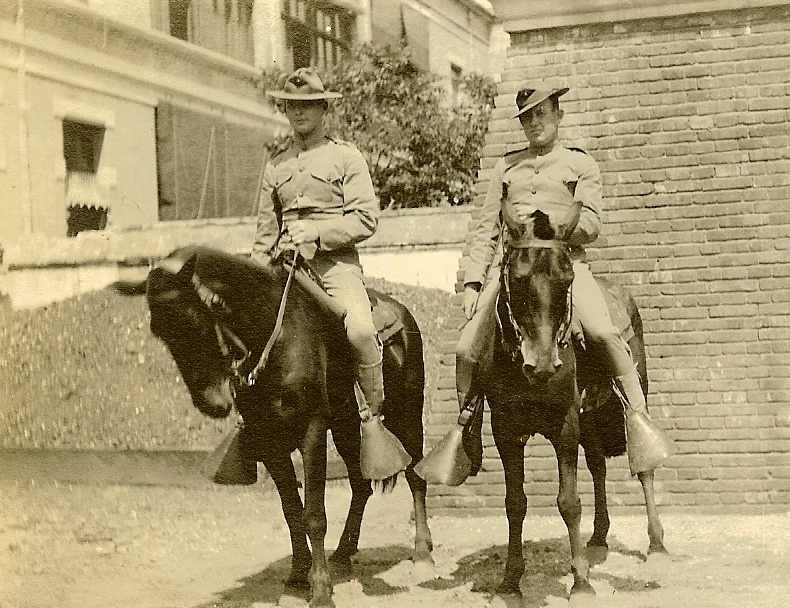
Men of the Mounted wearing summer uniforms, with their mounts equipped with Army issue tack, circa 1912.
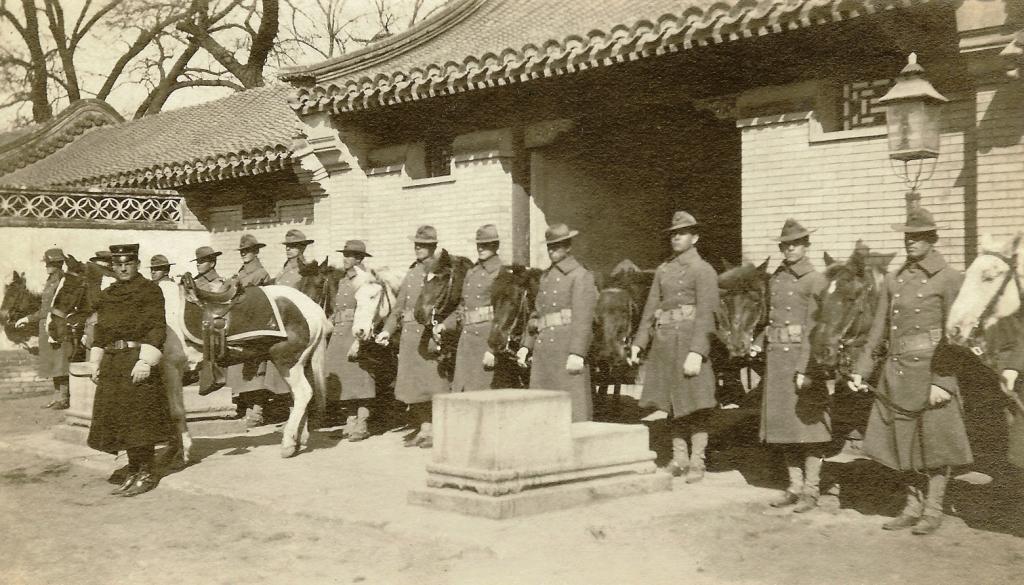
1st Lt Edwin N. McClellan and the Mounted Detachment, Winter 1912/13
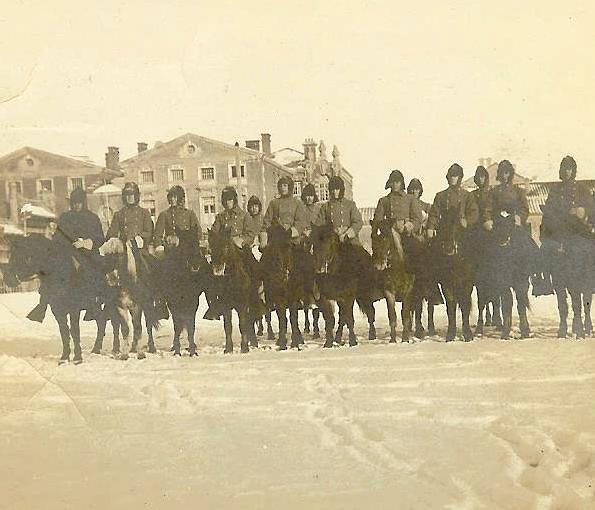
The Mounted on the American Glacis, Winter of 1914-15
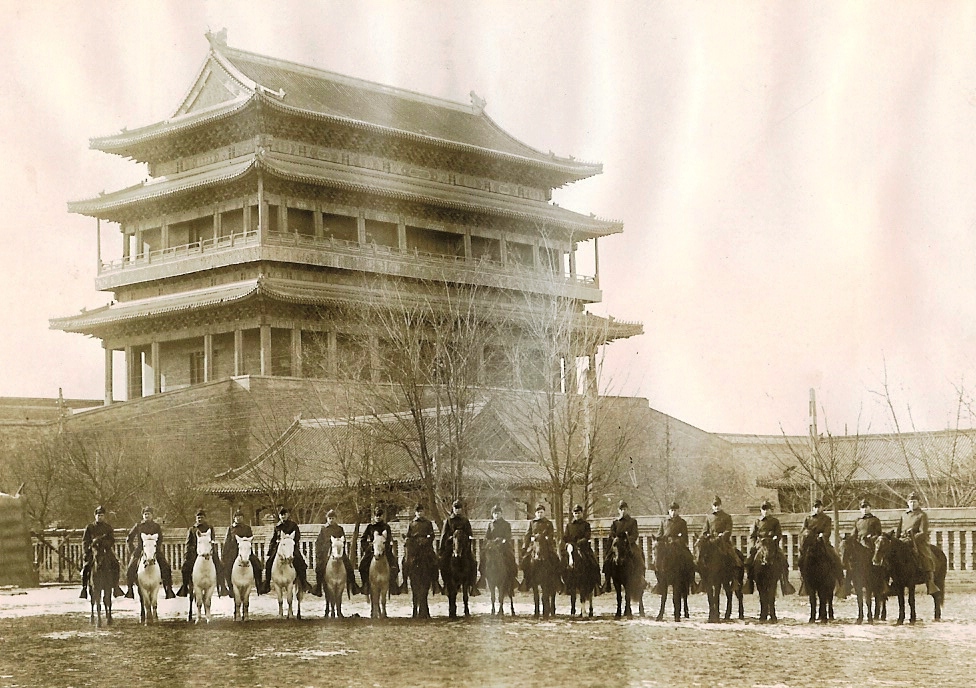
The Men of the Mounted, 1923. Note these Marines are wearing Winter fur hats without an eagle, globe and anchor device or the diamond hat device
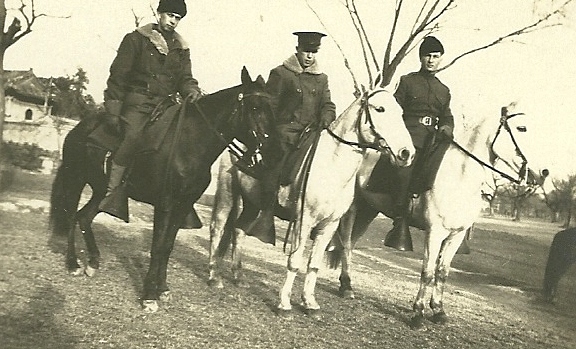
Mounted Troopers Mid-1920's.. Photo courtesy of the Weimer Family Collection
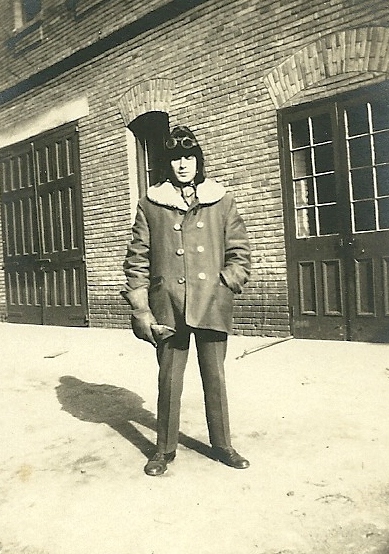
Mounted Trooper wearing his winter riding outfit. Note the fur cap without EGA and goggles. Photo courtesy of the Weimer Family Collection.
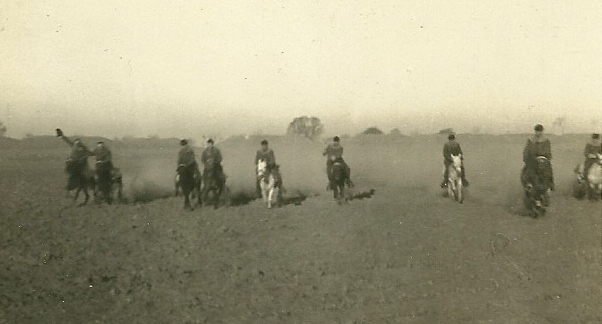
Men of the Mounted on a training ride, mid-1920's. Photo courtesy of the Weimer Family Collection
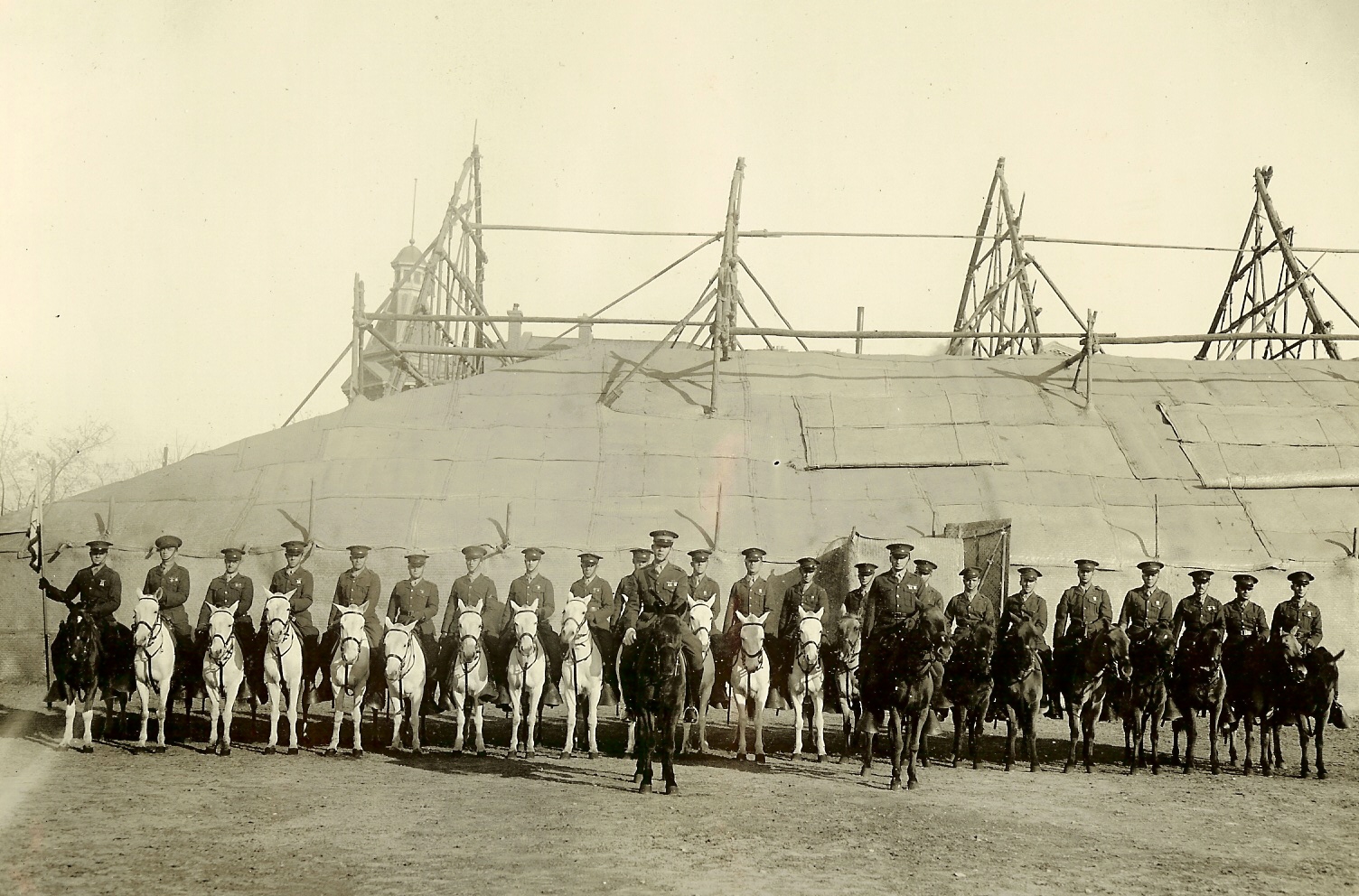
The Men of the Mounted, c. 1932
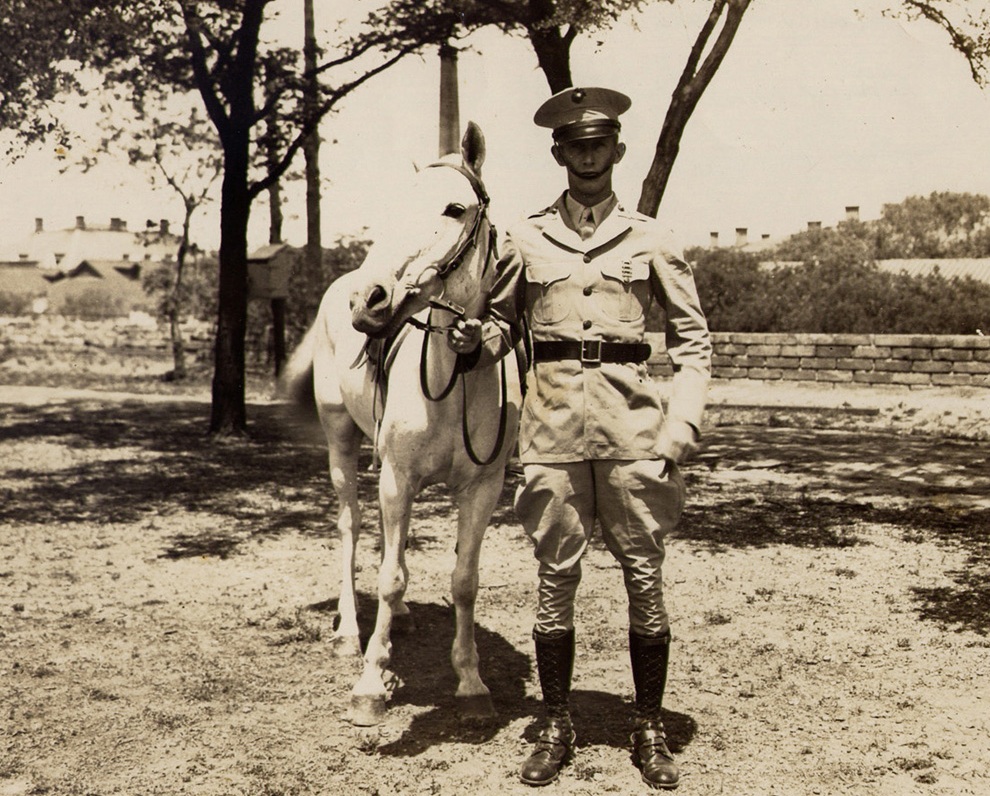
PVT Thomas "Johnnie" Johnston with his horse "Chief" on the Tartar Wall, 1934. Photo courtesy of Fred Schaltegger and Bill Thornton
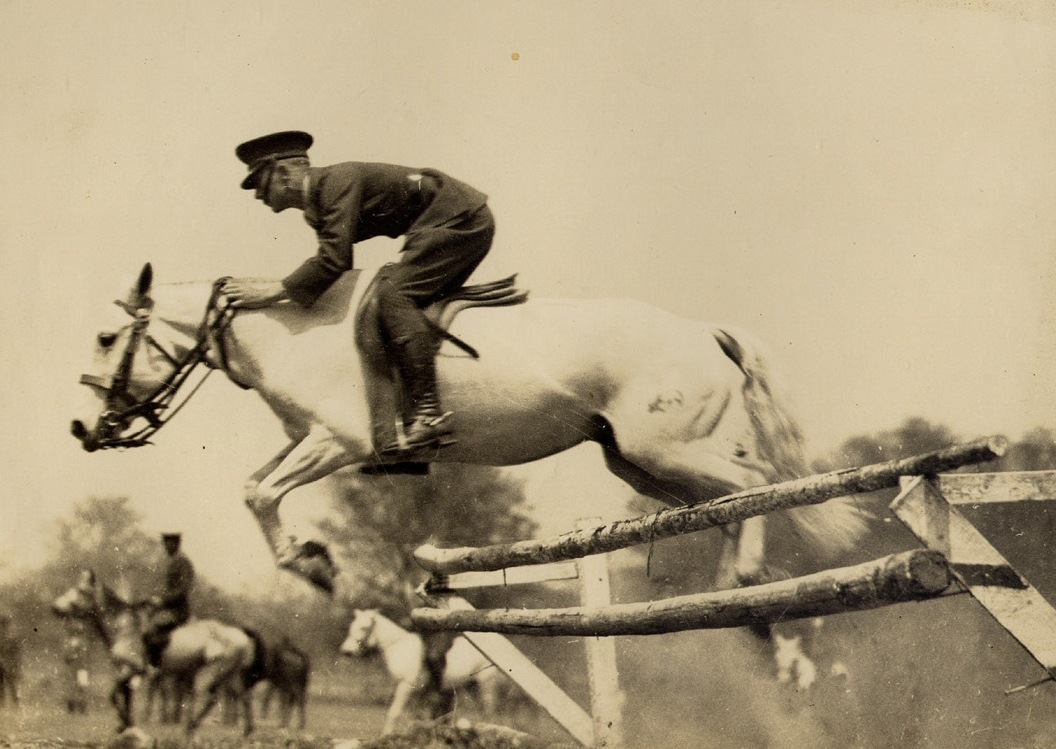
Pvt Johnston jumping, most likely near the Princess Tombs training area. Note: the horse has on a English saddle, not a standard issue Army saddle. Photo courtesy of Fred Schaltegger and Bill Thornton
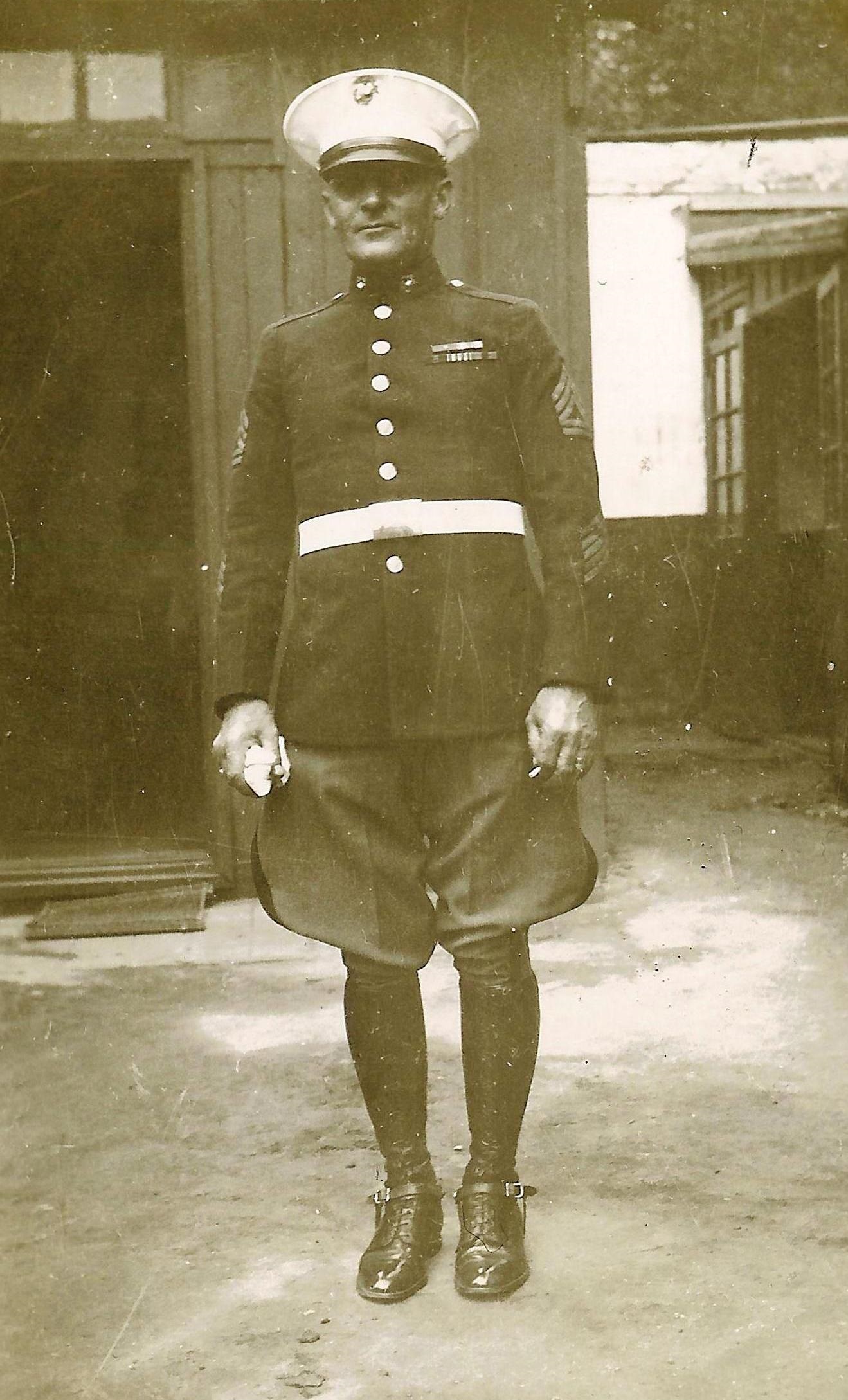
Technical Sergeant George Nowack, Senior NCO of the Mounted. Photo taken in teh Qunartermasters Compound
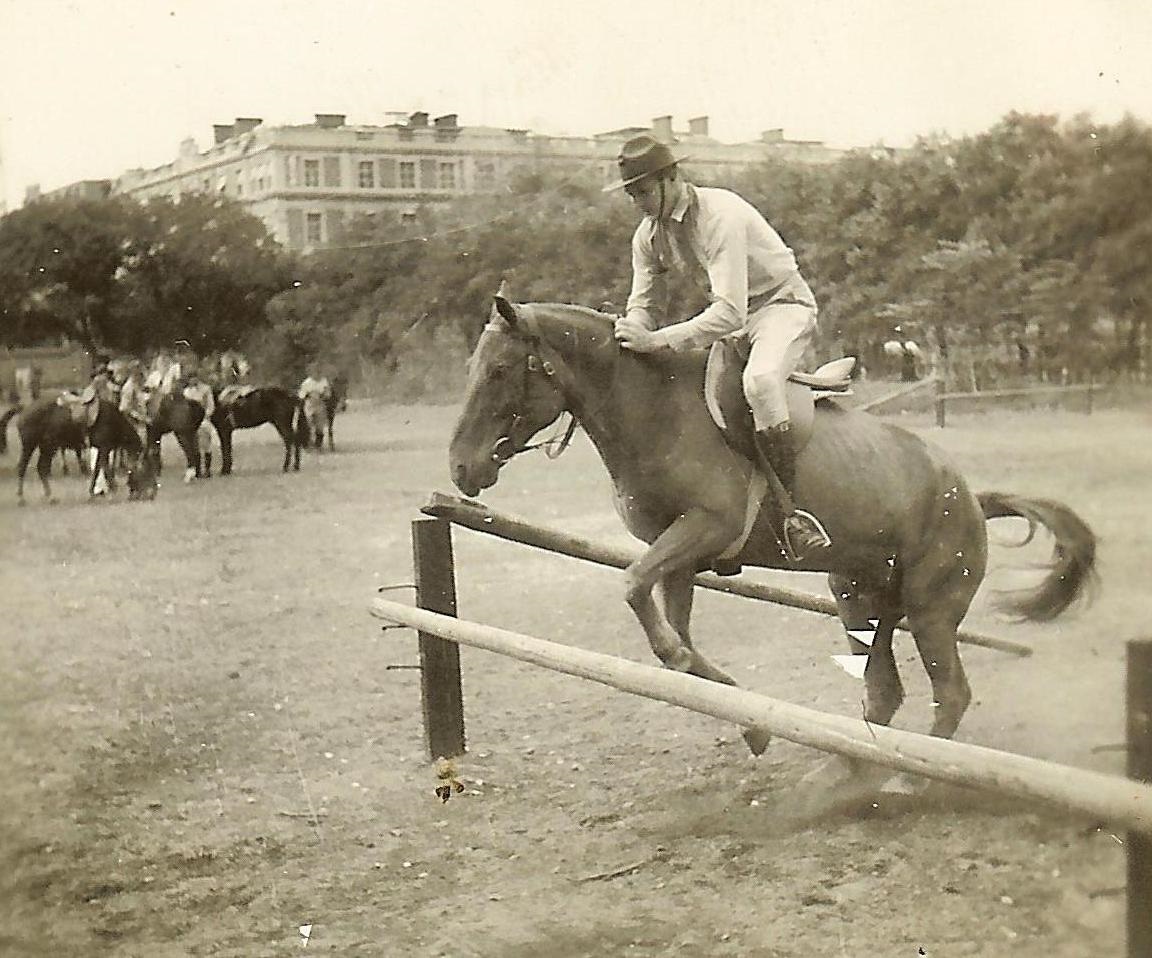
Training on the International Glacis

In the years that followed the 1912 riots the Mounted slowly expanded their numbers to 30 and standardized their equippment and appearance. Early images in my collection show the men eqipped with Army issue gloves, goggles and either straight legged blue service pants or forest green riding britches. After WWI the blues were cast aside in favor of forest greens or khakis until the late 1920's when light blue britches were issued. Ultimately the detachment armament included rifles, three Browning Automatic Rifles, and three Thompson sub-machine guns. Each man was armed with a pistol and a saber.
The primary purpose of the Mounted Detachment, as they formally called themselves, was to rapidly reach American citizens living outside the Tartar Wall who may require rescue during times of political unrest. George Howe remembered one of his duties while mounting guard on the Tartar wall was to notify the Sgt of the guard if an American citizen fired a distress flare anywhere in the city. Once notified, the Mounted was supposed to sortie out to bring them in.

Rex Boors, c. 1929
An additional duty the Mounted performed was taking an annual census of Americans living outside of the Legation Quarter. This census tallied not only location, but numbers, who possessed military training and who owned an automobile (invaluable should the Americans evacuate Peking via convoy). The Mounted enjoyed long hard rides in the country and during the Guard’s winter maneuver cycle, the Mounted usually played the part of hostile forces. The Mounted also served as MP’s for the Legation Guard force.
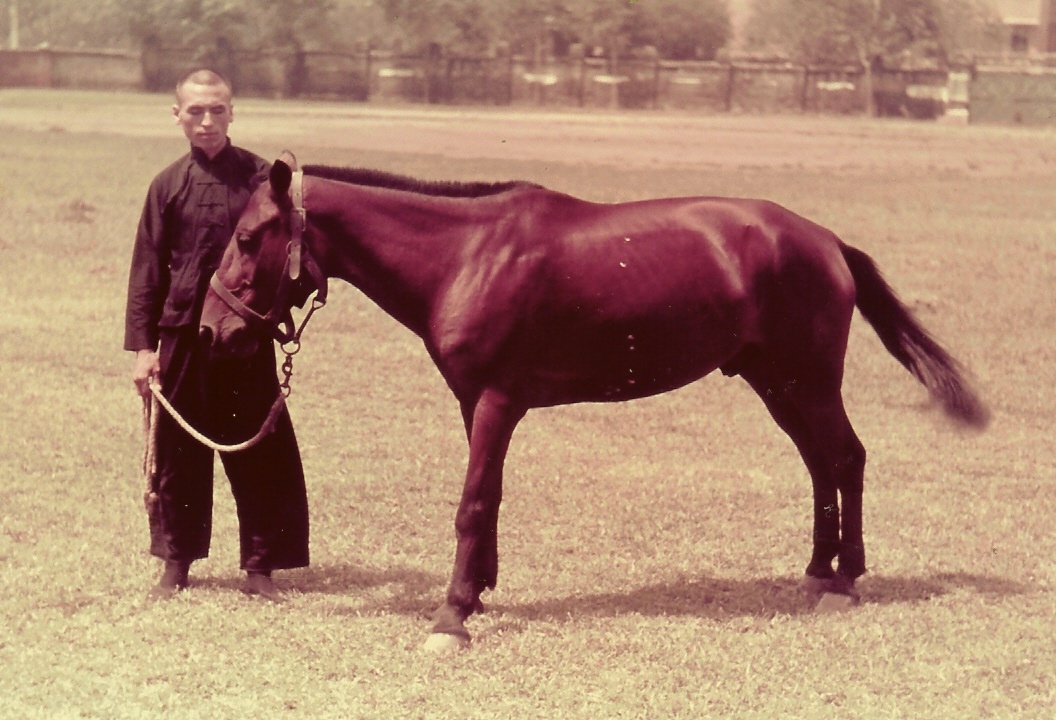
A Mafoo (Groom) with a China Marine Mongolian Pony
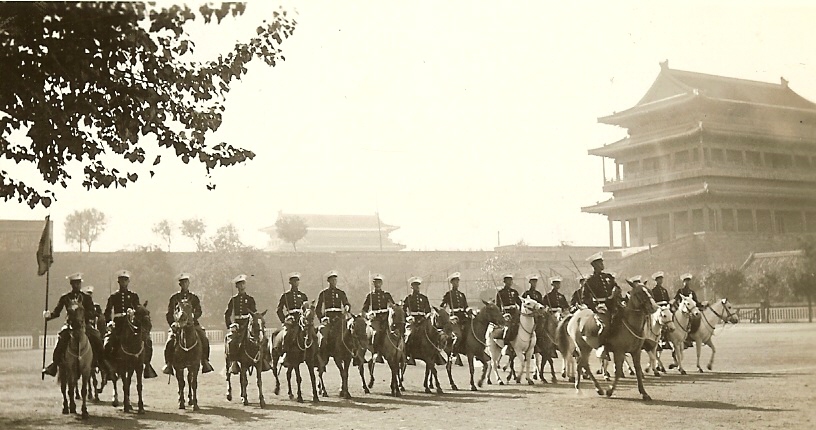
Navy Day Parade, October 1935
Over time the Mounted grew to become an elite organization within the Legation Guard and as such a candidate had to meet a rigorous standard of training before acceptance. One training example included a cross country ride with crossed stirrups and one’s hands behind one’s back. Those that couldn’t keep up where publically wished well and sent back to the line companies. For those who made it however, there was an intense sense of pride. These men went on to compete successfully in riding competitions and steeplechase events against all comers and they became the highlight of the formal Saturday morning parade. Of course their officers had to be of a higher standard as well. The future commander of the Marines on Wake Island James Devereux, as well as Chesty Puller, who commanded the Mounted in the early 1930s.
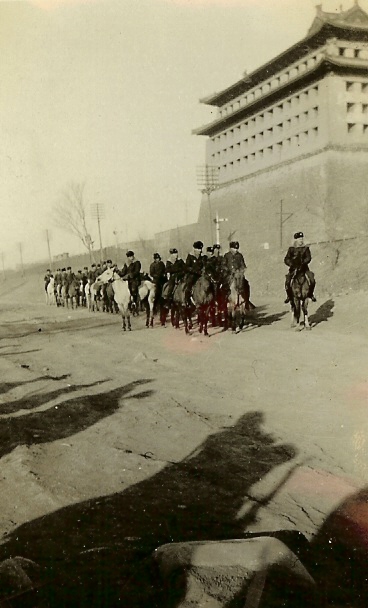
Lt Schatzel leading the Mounted on a patrol outside Peiping, c. 1937
With the Japanese in control of Peiping and the surrounding countryside following their offensive of 1937, justification for maintaing a mounted detachment proved difficult. But it was the call for the Peiping Marines to take over the U.S. Army's mission in Tientsin that sealed their fate. Without additional manpower for a new mission, Colonel Marston, the Commander of the Marine Embassy Detachment decided to send the bulk of the Mounted to Tientsin, minus their mounts to assist in augmenting the mission. On February 20, 1938 Marston issued General Order No. 9-1938 calling for the disbandment of the Mounted Detchment. On 22 February the Mounted's final Commander, Lt. Dewolf Schatzeland his 31 men held a final review on the grounds of the American Glacis. Shortly after the review a number of the men and their mascot “trooper” were sent to Tientsin to form the nucleus of Company D. A year later the remaining men of the Mounted, both in Tientsin and Peiping met for a final farewell supper, at which time they presented Lt Schatzel a plaque in honor of his leadership. As for their horses, several joined them in Tientsin, some were sold and others remained at the stable for Marines to use during liberty through 1941.
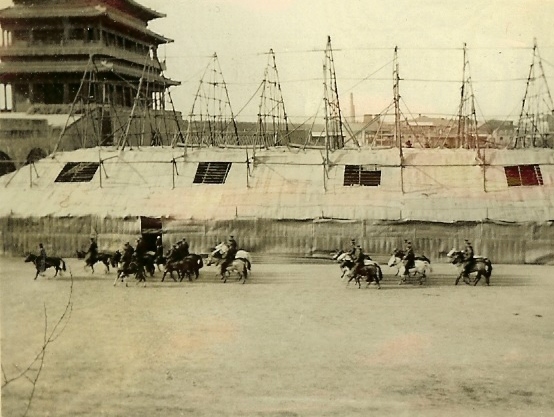
Parading around the Galcis

The charge!

Lt Schatzel leading the last of the Mounted in a final salute, Feb 1938 (From the collection and shown with permission of the Schatzel family)
